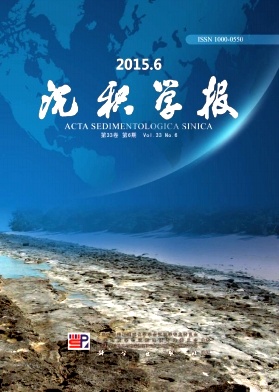The Analysis of Sedimentary Environmental Evolution of the T3x/T2l Boundary Transition in Qilixia of Xuanhan, Sichuan
doi: 10.14027/j.cnki.cjxb.2015.06.008
- Received Date: 2014-10-27
- Rev Recd Date: 2015-02-19
- Publish Date: 2015-12-10
-
Key words:
- sedimentary environment /
- Middle-Upper Triassic Series /
- geological boundary /
- Qilixia Section /
- Xuanhan
Abstract: A series of significant geological, climatological, and biological events have been documented during the Triassic period(252~201 Ma). Influenced by the tectonic movement, the sedimentary environment changed from marine to continental in the Upper Yangtze region and the rudiment of the Sichuan Basin was preliminary formed during the Middle-Late Triassic transition. The Middle to Upper Triassic deposits in the Sichuan Basin probably recorded the major changes of sedimentary environment and biodiversity variations during this period. The Middle-Late Triassic marine and non-marine transitional strata are well developed and outcropped in Qilixia, Xuanhan, NE Sichuan representing the perfect profile for investigating the evolution of marine and continental environment during the Middle-Late Triassic in the Sichuan Basin. The basal part of the section(bed 1) is represented by the gray and thick muddy dolomite deposit of the Middle Triassic Leikoupo Formation, inferring an evaporative platform miocrofacies. The systematic study on the 1st member of the Upper Triassic Xujiahe Formation shows that the lithologic characters are dominated mainly by dark grey, black mudstone and shale; there are few sandy, silty mudstone and no conglomerate. Mudstones are medium to thin layers and the parallel beddings are common; mud cracks, biological disturb and lebensspur are also founded at the surface of the rock. The root clay is also distributed in the mudstone with coal inclusions and charcoalified plants; some thin layers of siderite concretions and calcic concretions are developed at the bottom and top of the mudstone; in addition, gypsum is locally distributed. The lithological association reflects the regularity of the sedimentary environment from marine to terrestrial. The pollen data analysis shows that most of the vegetation species are ferns, conifers and cycads in the Xuanhan region during the Late Triassic. The plant community represents a subtropical and tropical climate condition and the subaquatic environment. Sedimentary environment and facies of the 1st member of the Upper Triassic Xujiahe Formation could be divided from evaporative platform, lagoon-tidal flat, coastal marsh to estuarine sandbar based on evidences of lithology, color, structure, lens, carbon isotope, paleontology and coal accumulation. The regular evolutionary model shows that the strata of the formation had an unbroken transgressive and regressive cycle during the Norian-Rhaetian. Influenced by the Indosinian Movement, a great regression happened, the typical marine deposition of shallow-water carbonates in the Upper Yangtze platform ended and most of the Sichuan Basin uplifted to the land, the carbonaceous Lower and Middle Triassic series were weathered and eroded. The continual transgression started in the Carnian age didn't arrive at Xuanhan region until the Late Norian age. Once the transgression arrived, the bar-built estuarine environment began to take shape and the muddy facies deposited. At the end of the Norian age, the regression event controlled by the orogenic uplift of the Qinling Mt. and the strong crumpling of the North-China Plate happened again, the seashore and lakeshore swamp occurred and the muskey and lakeshore swamp facies covered the muddy facies formed before. With the continuous regression, the rivers originated from the Daba Mt. were dominated at the Rhaetian age. The riverine environment, a typical terrestrial sedimentary environment, occupied the entire Xuanhan region and its adjacent area and the riverine sedimentary facies occurred. The evolutionary process of the paleoenvironment is an essential reflection of the changes in NE Sichuan Basin during the Middle-Late Triassic.
| Citation: | LU Ning, XIE XiaoPing, WANG YongDong, LI LiQin. The Analysis of Sedimentary Environmental Evolution of the T3x/T2l Boundary Transition in Qilixia of Xuanhan, Sichuan[J]. Acta Sedimentologica Sinica, 2015, 33(6): 1149-1158. doi: 10.14027/j.cnki.cjxb.2015.06.008 |






 DownLoad:
DownLoad: